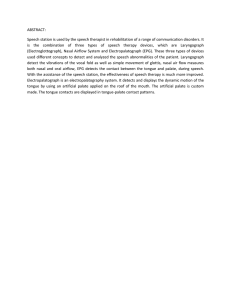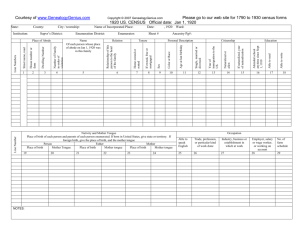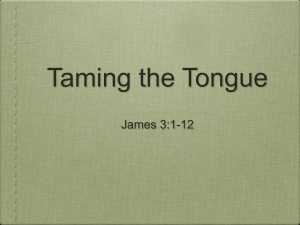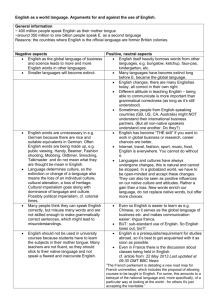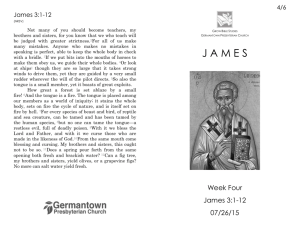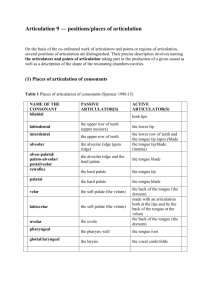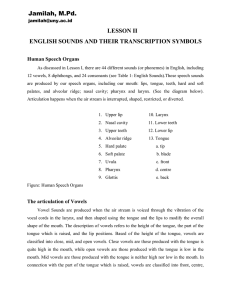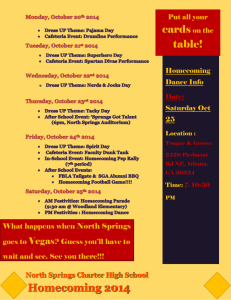OCCLUSIVE-CONSTRICTIVE CONSONANTS (AFFRICATES)
advertisement
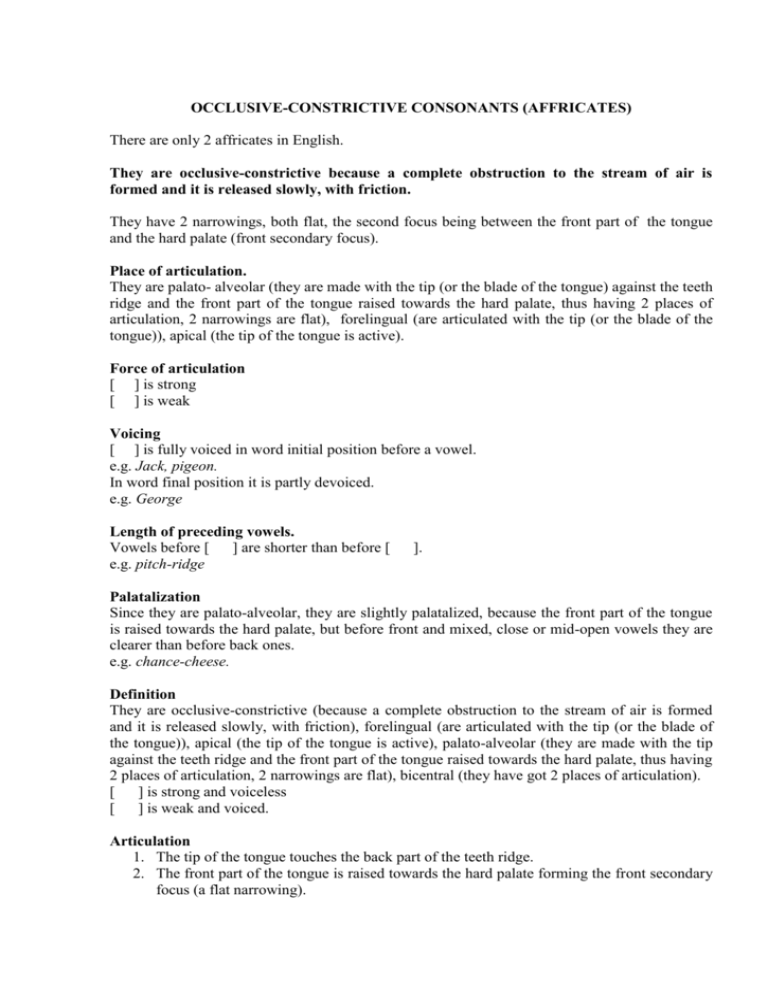
OCCLUSIVE-CONSTRICTIVE CONSONANTS (AFFRICATES) There are only 2 affricates in English. They are occlusive-constrictive because a complete obstruction to the stream of air is formed and it is released slowly, with friction. They have 2 narrowings, both flat, the second focus being between the front part of the tongue and the hard palate (front secondary focus). Place of articulation. They are palato- alveolar (they are made with the tip (or the blade of the tongue) against the teeth ridge and the front part of the tongue raised towards the hard palate, thus having 2 places of articulation, 2 narrowings are flat), forelingual (are articulated with the tip (or the blade of the tongue)), apical (the tip of the tongue is active). Force of articulation [ ] is strong [ ] is weak Voicing [ ] is fully voiced in word initial position before a vowel. e.g. Jack, pigeon. In word final position it is partly devoiced. e.g. George Length of preceding vowels. Vowels before [ ] are shorter than before [ e.g. pitch-ridge ]. Palatalization Since they are palato-alveolar, they are slightly palatalized, because the front part of the tongue is raised towards the hard palate, but before front and mixed, close or mid-open vowels they are clearer than before back ones. e.g. chance-cheese. Definition They are occlusive-constrictive (because a complete obstruction to the stream of air is formed and it is released slowly, with friction), forelingual (are articulated with the tip (or the blade of the tongue)), apical (the tip of the tongue is active), palato-alveolar (they are made with the tip against the teeth ridge and the front part of the tongue raised towards the hard palate, thus having 2 places of articulation, 2 narrowings are flat), bicentral (they have got 2 places of articulation). [ ] is strong and voiceless [ ] is weak and voiced. Articulation 1. The tip of the tongue touches the back part of the teeth ridge. 2. The front part of the tongue is raised towards the hard palate forming the front secondary focus (a flat narrowing). 3. The soft palate is raised so that the breath is trapped for a short time (because of the complete obstruction between the tongue-tip and the teeth ridge) then the obstruction is released slowly and the friction is heard. 4. The lips are slightly rounded. Ресурс - М.А. Соколова, К.П. Гинтовт, Л.А. Кантер, Н.И. Крылова, И.С. Тихонова, Г.А. Шабадаш, Практическая фонетика английского языка, Москва, «Гуманитарный издательский центр ВЛАДОС», 1997 – 51.
